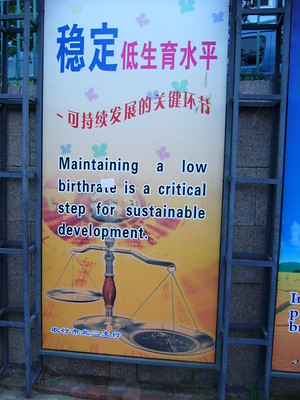In another groundbreaking report, Adrian Zenz, Senior Fellow in China Studies at Victims of Communism Memorial Foundation, once again sheds light on the coercive population control measures the Chinese government is undertaking in Uyghur-populated regions and examines primary source documents to breakdown China’s goal of “optimizing the ethnic population structure”. Despite the vagueness of such words – which is obviously done purposefully to deflect blame for its oppressive demographic manipulation of Uyghur regions under the guise of so-called ‘population optimization’ – numerous Chinese scholars have elucidated what such a phrase really means.
Dean of the Tarim University’s Institute of Frontier History and Geography explained that the government must “change the population structure and layout, [and] end the dominance of the Uyghur ethnic group.” He further claimed that the high proportion of Uyghur residents in the Xinjiang region is the “underlying reason” for the region’s tumult, and that the only solution would be to promote the mass immigration of ethnic Han majority into the Xinjiang region to dilute the ethnic minority population. Liao’s musings have been echoed by numerous other influential Chinese scholars, including Senior Research Fellow Xu Jianying of the Chinese Academy of Social Sciences and Vice Dean Xu Zhongcheng of the Shandong Police College.
Even Liu Yilei, Deputy Secretary-General of the CCP Committee of Xinjiang’s Production and Construction Corps – an entity sanctioned by the United States for its direct involvement in the mass detention of and human rights violations against Uyghur and Turkic Muslims – has purported that “…the problem in southern Xinjiang is mainly the unbalanced population structure. Population proportion and population security are important foundations for long-term peace and stability.” It appears that in Liu’s mind, an acceptable method of ‘population proportion and population security’ is to arbitrarily detain and forcibly indoctrinate upwards of 1-2 million Uyghur and Turkic Muslims in China’s concentration camp system. Interesting.
In the report, Zenz asks the question on everyone’s mind: “how exactly do Chinese academics conceptualize the relationship between ethnic population ratio and social stability?” And in his search for the answer, Zenz came across a 2017 research paper by Li Xiaoxia, director of the Xinjiang Academy of Social Sciences Institute of Sociology. In her report, Li fashioned the most contrived explanation that, according to her perception, the high population of Uyghurs in Xinjiang and the lack of Han ethnic majority presence in the region contributed to a “viewpoint that one ethnic group owns a [particular] land area, [thereby] weakening national identity and identification with the Chinese Nation-Race, [adversely] impacting long-term peace and stability.” In essence, in 2017 Li presented a conjecture with no factual basis that was widely accepted by academics and government outfits across China.
In direct response to Li’s publication, and in an observable trend since 2017, more and more literature began to focus on the Xinjiang ‘problem’ and its multiple facets. To resolve the handful of issues which the Chinese government and academic society viewed Uyghur and minority populations to be the core cause of, numerous policies were undertaken, the most prominent of which being ethnic ’embedding’. By this process, Uyghur adults would be transferred into other regions to engage in forced labor, ethnic Han would be encouraged to move to Xinjiang, and Uyghur children would be transferred into mixed schools. Geographically, neighborhoods would be manipulated to insert Han family homes between and among Uyghur houses. Each of these efforts are to dilute the alleged and unproven ‘problems’ associated with a cluster minority population (i.e., susceptibility to religious extremism, improper and insufficient education, underemployment, increased criminality, uber-traditionalism, and “negative energy”.)
But all of these policies to diffuse the Uyghur minority population in Xinjiang are not without their negative implications for the future. The most observed issue is the exponentially decreasing carrying capacity of Xinjiang, due to strain of an even higher population (due to the influx of thousands of Han residents) on the already limited agricultural, water, and land-based resources. And so the government took it a step further, and a step too far. In order to account for the issue of excessive demographic density in Xinjiang – which was a direct result of the government’s own ‘population optimization’ policy initiatives – they embarked on a new program of forced birth prevention.
Zenz covered this topic in his 2020 report Sterilizations, IUDs, and Mandatory Birth Control: The CCP’s Campaign to Suppress Uyghur Birthrates in Xinjiang. Uyghur and Turkic minority women are forcibly subjected to irreversible tubal ligation sterilization procedures or oral medications that stop their menstruation; the implantation of IUDs that are only removable with government-approved surgical operations. In detention centers throughout Xinjiang, Uyghur and minority women are forced to ingest drugs or receive injections that do a variety of the following: (1) cause premature menopause; (2) cause irregular bleeding; (3) decrease sex drive. Zenz also explains a more indirect cause of birth prevention:
“…Around 75-90 percent of those interned are men (most of them between the ages of 25 and 49), meaning that if any of them should die as a result of internment conditions, married women of childbearing age would experience a disproportionate increase in widowhood.
“Between late July 2016 and late January 2017, figures were nearly unchanged regarding the percentages of women who were either: (a) infertile and in possession of a related government certificate (原发不孕 yuanfa buyun); (b) were in menopause; or (c) were widowed. However, between late January 2017 and late March 2018, these shares increased by 124.4 percent, 106.0 percent and 116.5 percent respectively. Many of these increases began in the summer of 2017, when the internment campaign was in full swing.”
Cover image by kafka4prez on Flickr (CC BY-SA 2.0)

